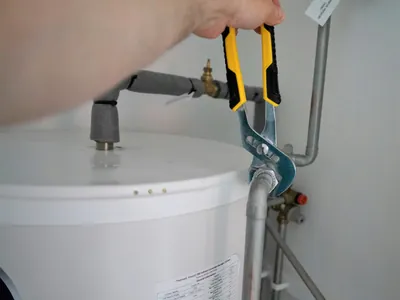Electrical Wire Gauge: Choosing the Right Size

Not all electrical wires are created equal. The thickness of a wire, known as its gauge, determines how much electrical current (amperage) it can safely carry. Using a wire that is too small for the circuit's load is one of the most dangerous electrical mistakes, as it can cause the wire to overheat and create a serious fire hazard. Understanding wire gauge is fundamental to electrical safety.
🔢 The AWG System
In North America, wire size is measured by the American Wire Gauge (AWG) system. It's a bit counterintuitive: the smaller the gauge number, the larger and thicker the wire.
A smaller gauge number (like 10 AWG) means a thicker wire that can carry more current. A larger gauge number (like 14 AWG) means a thinner wire that carries less current.
🔥 Why Wire Size Matters: Resistance and Heat
Electricity flowing through a wire creates friction, which generates heat. A thicker wire has less resistance, allowing current to flow more easily with less heat buildup. A thinner wire has more resistance, causing it to heat up more under the same load. If the current exceeds the wire's rating, it can get hot enough to melt its plastic insulation and ignite surrounding materials.
📋 Matching Wire Gauge to Circuit Breaker Amperage
The rule is simple: the wire gauge must be properly sized for the amperage rating of the circuit breaker that protects it. Here are the common pairings in residential wiring:
15-Amp Circuit
Requires a minimum of 14-gauge wire. Typically used for general lighting and standard bedroom/living room outlets.
20-Amp Circuit
Requires a minimum of 12-gauge wire. Used for kitchen countertops, bathrooms, laundry rooms, and garages.
30-Amp Circuit
Requires 10-gauge wire. Commonly used for electric clothes dryers and some water heaters.
40-50-Amp Circuit
Requires 8-gauge or 6-gauge wire. Used for high-power appliances like electric ranges and central A/C units.
⚠️ Never "Overfuse" a Circuit
It is extremely dangerous to put a 20-amp breaker on a circuit with 14-gauge wires. The breaker will allow 20 amps of current to flow, but the wires are only rated for 15 amps, creating a severe fire hazard. The breaker is there to protect the wire.
Choosing the correct wire size is a critical safety decision that must be done according to the National Electrical Code. For any new circuit installation or wiring project, rely on the expertise of The Box Advantage Group. Our licensed electricians ensure every wire is properly sized for the job.


